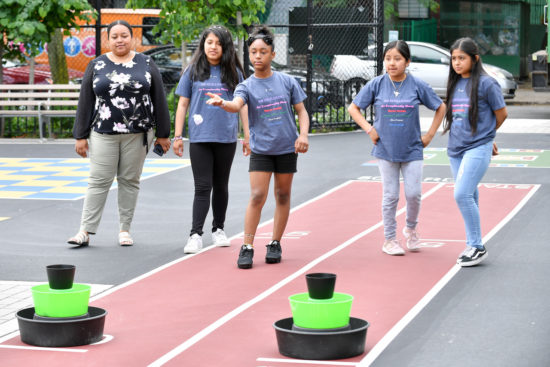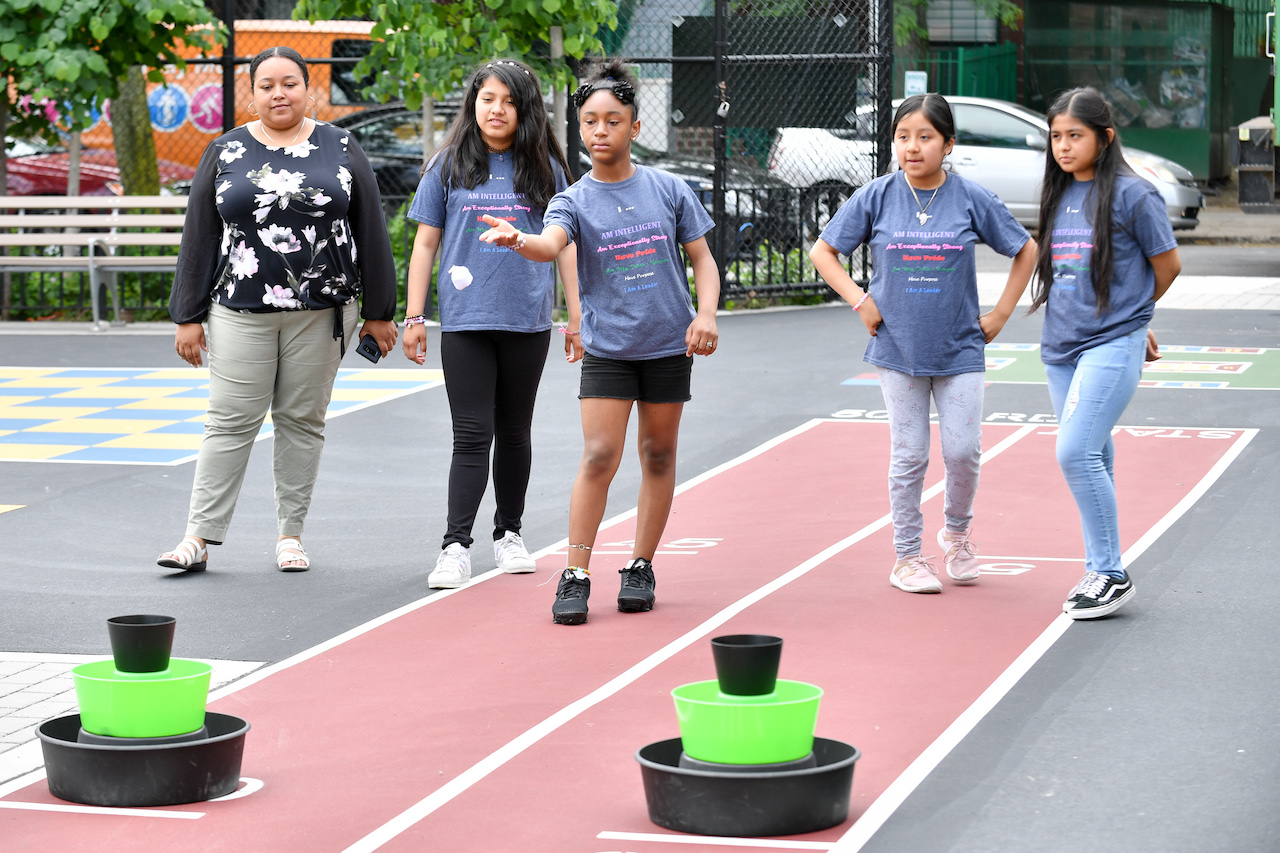
Revamped play space is part of city’s Community Parks Initiative
Students and staff from P.S. 369, P.S. 352 and P.S. 179 joined community officials to cut the ribbon on a revamped Saw Mill Playground on E. 141st Street on June 7.
They were joined by the parks department’s Bronx Borough Commissioner Iris Rodriguez-Rosa and the Department of Environmental Protection’s Bronx Borough Coordinator Effie Ardizzone to cut the ribbon on the reconstructed playground, which was included in Mayor Bill de Blasio’s Community Parks Initiative. $6.6 million were invested into the upgrade, along with an additional $1.4 million allocation from DEP for green infrastructure to help improve the health of the Harlem River.
The playground features new basketball courts and play equipment, youth fitness equipment, a synthetic turf field and spray showers.
To manage stormwater runoff, green infrastructure has been added throughout the playground, which, combined, can capture 1.3 million gallons of stormwater every year. DEP has committed approximately $50 million in funding for green infrastructure installations at CPI sites throughout the city, helping to reduce sewer overflows that sometimes occur during heavy rainfall, improve air quality and lower summertime temperatures.
“The newly installed green infrastructure at this playground will help to reduce stormwater runoff (into sewers), improve the health of the Harlem River, and beautify the neighborhood,” said DEP Commissioner Vincent Sapienza.
The Community Parks Initiative was launched in October 2014, to invest in investing in smaller parks in densely-populated neighborhoods with higher-than-average concentrations of poverty. It calls for $318 million in capital dollars for the renovation of 67 parks citywide that have not undergone significant improvements in decades.
The playground is named for the Saw Mill Creek, also known as the Mill Brook, which once flowed by this parkland. The creek originated in the North Bronx, ran along what is now Brook and Webster Avenues, and emptied into the Bronx Kill.
Sawmills flourished along the many tributaries of Bronx waterways for two centuries, depending on water to provide power and to transport goods. Logs were floated downriver to sawmills, which cut raw lumber for building material and for paper.

